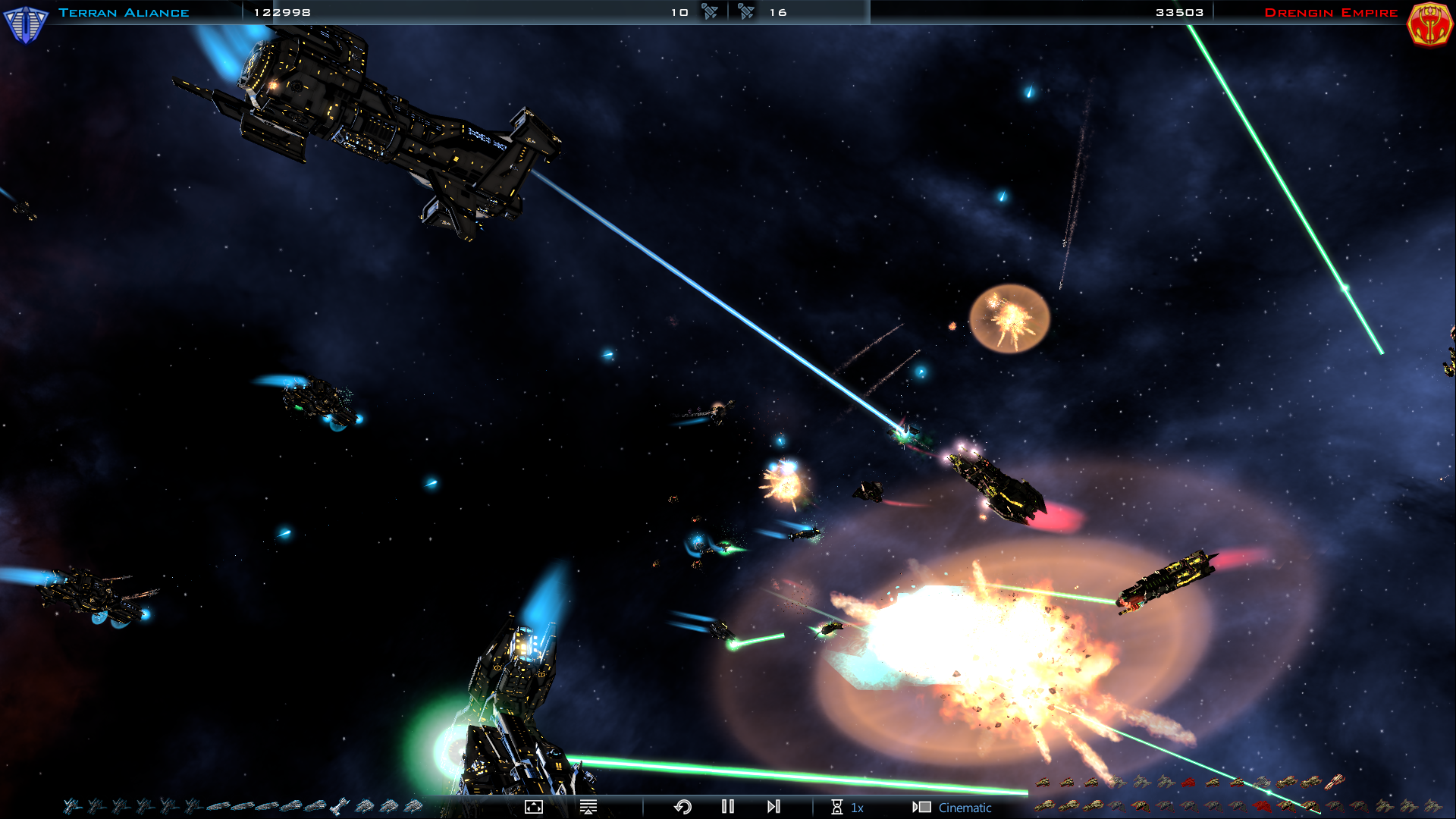Galactic Civilizations 3 has its sights set on the future

Galactic Civilizations 3 left Early Access earlier this week. We'll have a review next week, but in the meantime, Richard Cobbett brings us his impressions so far.
There’s a wonderful ‘new page’ smell to the start of any 4X game. No alliances have been made, no mysteries spoiled. Your empire is a ball of potential, just waiting to be formed, channelled, attached to a metaphorical chain and smashed into enemies you’ve yet to even meet, never mind make. It’s the point of a game when anything will happen, and where all the surprises are ready to be revealed. In Galactic Civilizations III though, it goes deeper. It’s a game, and not to spoil the review, a really good one (with a few expected irritations, especially in the endgame and once your empire swells to beyond a certain size). However, and not to damn with faint praise, it comes across less as the sequel than the beginning of the sequel.
It’s a little unfair, but different games do come with different expectations. Some, you play and expect to be perfect, or as close to perfect as possible, at launch. Others are openly the start of a journey that both you and the developer are going to be on for a while. Pardon the jump of series, but the Civilization games offer a good contrast. We expect a new Civilization game to be good, obviously, but also to be playing it for the long-haul. A feature being missing or underbaked at launch isn’t ideal, but we know there’ll be expansions like Gods and Kings for the major stuff, with the added focus that they allow on their subject areas compensating for the wait. Conversely, Beyond Earth is inherently a shorter-term proposition, meaning that while tomorrow might be great, it’s today that really counts. See also MMOs versus single-player RPGs, MOBAs vs. shooters.

GalCiv 3 feels like a game with its sights set on tomorrow, preparing the ground for expansions and updates and new features in a way that only a company with Stardock’s past form can make feel exciting. That’s not to say it’s stripped down or missing features—it’s not, or at least not too many. The political side has taken the biggest hit, along with spying. Mostly though, it plays like a more polished version of the last game, with its changes primarily focused on smaller scale but important rules, such as how planetary resources and similar are handled. You can now have space-based shipyards for instance. The old morality system is no longer about classic Good and Evil but Benevolence and Malevolence, with rewards on offer for picking and sticking to one. Likewise, the overhauled tech-tree is now split into three broad Ages—Expansion, War and Ascension—to help clear things up and add a more obvious backbone to the constant cosmic warfares.
There are big-ticket items too of course, including a move from squares to hexes, and the almost heretical introduction of a multiplayer mode, as well as some lovely polish. Overall though, it’s very, very reminiscent of GalCiv 2 in look, play, focus, and ambition. If that was all it was going to be, that’d be disappointing, especially after so many years. As a base to work on though, it seems excellent. Changes are careful, well-worked over and stable, with the biggest change being under the hood—the limitations of 32-bit cast into the pit in favour of 64-bit processing. Stardock’s gimmicky example of what this means is that if you want, you can have a galaxy with a hundred empires duking it out. Honestly, I’ve not tried it yet for myself, though I’m fairly sure it would result mostly in a glimpse of the hell awaiting the naughtiest strategy fans when they die.

Still, it’s a good example. While giving every planet its own empire might redefine ‘overkill’, it speaks to how much more could be added to the strategic layers in the years to come, especially when its mod scene gets going. Steam Workshop support is coming in one of the first patches, with user-content opportunities in general ranging from full mods to new races, to weird and wonderful creations whipped up in the superb ship-builder. It’s one of the most flexible around, not only offering a huge selection of fins and greebles in addition to regular ship parts, but basic animation to help things come alive. Or at least, spin around.
We’ll have a full review for you soon, but my first impressions are very positive. GalCiv 2 was a fantastic 4X game and one of the very few that stands comfortably in Master of Orion’s shadow. We just want to take a spin through the campaigns, which were only added at launch, and get some more time in the command chair before boiling everything down to a convenient number that’ll definitely be lower than 100, but almost certainly higher than 32. Check back next week to see where it stands.
Keep up to date with the most important stories and the best deals, as picked by the PC Gamer team.

